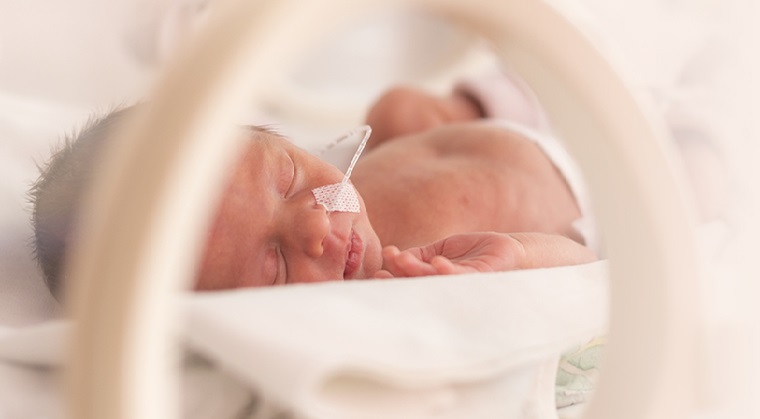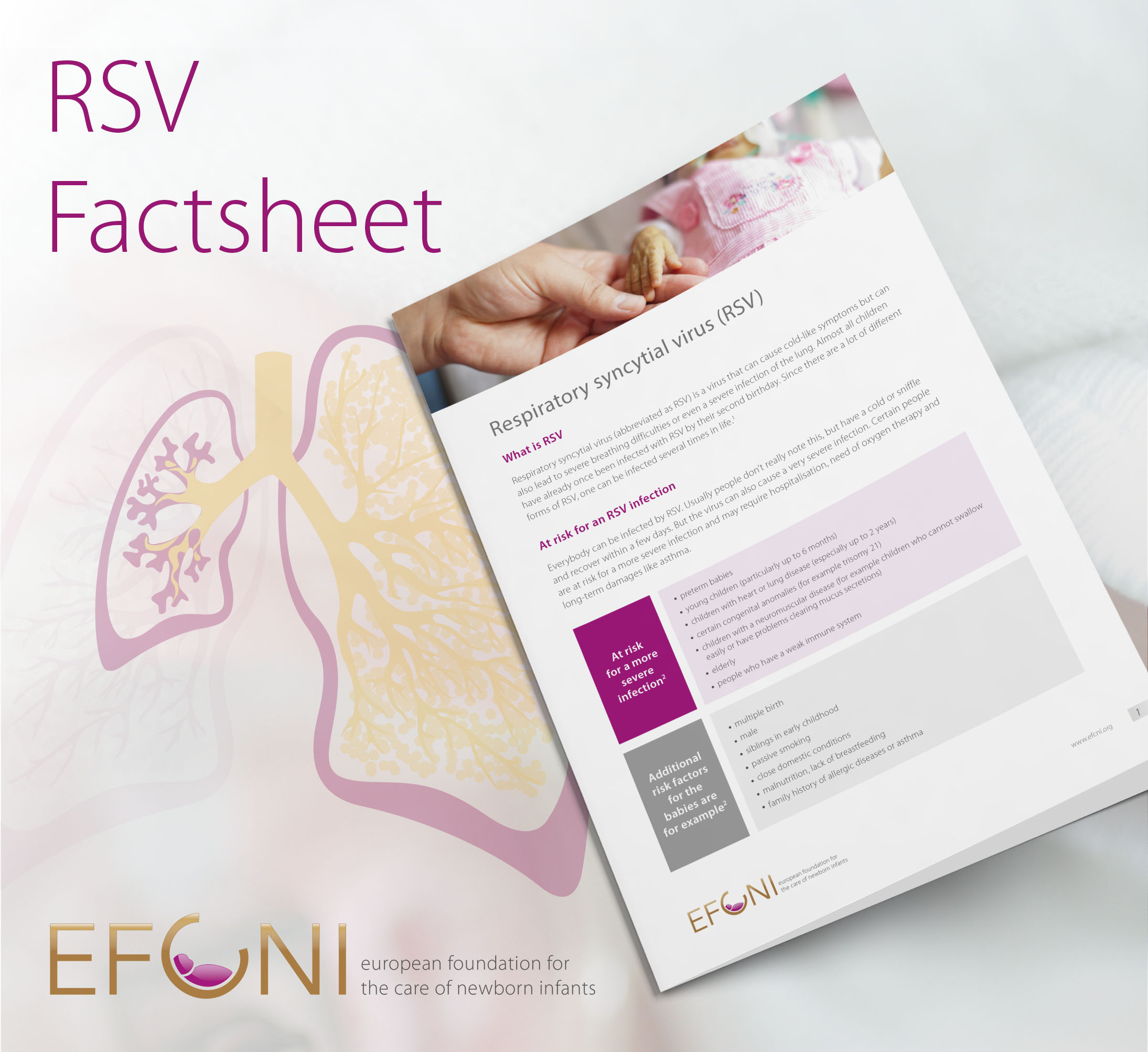Pregnancy Complications
Infant- and Family-Centered Developmental Care
Respiratory Infections
Neonatal Eye Health
Hygiene
Rare Diseases

Respiratory Syncytial Virus (RSV) is a highly contagious virus that causes infections in the lungs and airways. While it typically results in mild, cold-like symptoms in healthy children and adults, RSV can lead to severe respiratory illness in preterm infants and medically vulnerable babies—those with conditions like bronchopulmonary dysplasia (BPD) or congenital heart disease (CHD). These infants are at significantly higher risk of developing serious lower respiratory tract infections such as bronchiolitis or pneumonia, often requiring hospitalization, intensive care, or mechanical ventilation.
Because of their underdeveloped lungs and immune systems, preterm and high-risk infants may experience more severe symptoms and longer recovery times. That's why early awareness, informed decision-making, and targeted prevention are so important.
On this page, you'll find essential information about RSV and its impact on preterm and high-risk infants. Learn about risk factors, warning signs, and prevention strategies, and access downloadable resources to help raise awareness through our campaign: #LittleLungs – Help Protect Babies from RSV.
After learning about the dangers of RSV in vulnerable babies, you might wonder—what do RSV symptoms actually look and sound like? The onset may appear mild, with cold-like symptoms, but in preterm and high-risk infants, RSV can escalate quickly into a serious respiratory illness requiring medical support and hospitalization.
Our #LittleLungs animated video is designed to help parents and caregivers recognize RSV symptoms early—from subtle signs to more severe, alarming indicators. Understanding what to look and listen for can help you act fast and seek care when it matters most.
Watch the video to see and hear common signs of severe RSV, including:
If your baby’s condition worsens, or if you notice any of these signs, especially fever combined with difficulty breathing, don’t wait—seek medical help immediately.
You are not alone. Behind every RSV infection in a preterm or high-risk infant is a powerful story—one of resilience, fear, hope, and healing. In our video series, we give a voice to those who live and work closest to the impact of RSV: parents, caregivers, neonatologists, nurses, and pulmonologists.
These personal testimonies offer insight into the real-life challenges of RSV in medically vulnerable infants. From emotional hospital stays to daily caregiving stress and the long road to recovery, each story highlights a shared call for greater awareness, better prevention, and stronger support systems.
We’ve created one in-depth video (20+ minutes) featuring all interviews and six short clips below spotlighting each individual’s experience. Watch the full compilation or explore the shorter clips to hear directly from parents and healthcare professionals around the world.
Watch and share these powerful stories to help raise awareness of RSV in preterm and high-risk infants.
A neonatologist and mother of preterm triplets, Dr. Jacqueline González Landgrave shares how severe symptoms in one of her daughters led to hospitalization for RSV—and why recognizing warning signs early is critical.
Rachel Friend recounts her son Reuben’s frightening RSV hospitalization and how she had never heard of RSV until it became part of her family’s life. She now advocates for early education.
As a seasoned pulmonologist, Dr. Eleni Vavouraki explains what makes RSV so dangerous for preterm infants and why their underdeveloped lungs put them at greater risk.
Gigi Khonyongwa-Fernandez shares the story of her surviving preterm twin’s journey through the NICU and a severe RSV infection, shedding light on the emotional toll families endure.
A nurse in a pediatric and neonatal intensive care unit, Elsa Silva offers her perspective on the stress RSV places on both families and healthcare teams caring for fragile newborns.
Ilein Bolaños reflects on her experience as a mother of preterm twins and how their RSV infections affected the early years of their lives. She also shares how her children are thriving today as teenagers.
By watching and sharing these stories, you help amplify the voices of families and professionals affected by RSV—and bring attention to the urgent need for prevention, education, and support.
Thank you for listening—and for making a difference by sharing.

Looking for a quick, reliable overview of Respiratory Syncytial Virus (RSV)? Our compact RSV factsheet offers clear, easy-to-understand information on what RSV is, who is most at risk, and how to prevent it. Perfect for parents, caregivers, and professionals alike.
In this factsheet, you'll learn:
Available in 8 languages for maximum accessibility.
A special thank you to Professor Luc Zimmermann for his expert support in developing this resource.

As part of our ongoing “Voices of RSV” series, we’ve also spoken with Professor Luc J. I. Zimmermann, Professor of Pediatrics and Neonatology at Maastricht UMC+ and former Medical Director of EFCNI (now GFCNI). Drawing from both clinical expertise and hands-on experience, Prof. Zimmermann offers essential insights into why RSV is so dangerous for preterm and high-risk infants—and what parents and healthcare professionals can do to help prevent severe outcomes.
In this written interview, he explains:
Read the full interview to deepen your understanding of RSV and learn how to better protect vulnerable babies.
In 2018, EFCNI (now GFCNI) brought together a high-level roundtable of medical and patient experts to address the rising concern of RSV infections in preterm and medically fragile infants. This international panel discussed national strategies, gaps in prevention, and the need for improved care across healthcare systems. The result: a unified call to action.
The RSV position paper, first published in 2019 and updated in 2020 with prophylaxis guidelines from 33 countries, outlines key measures to reduce RSV-related infections and hospitalizations among high-risk infants.
Download the position paper to explore expert recommendations and strategies for effective RSV prevention.
Since the paper’s publication, major advancements have been made. Today, long-acting monoclonal antibodies (such as nirsevimab) and maternal vaccines have become available in several countries, offering new hope in the fight against RSV—especially for preterm, immunocompromised, and young infants.
While basic hygiene and behavioral precautions remain essential, these new preventive tools represent a major step forward in protecting the most vulnerable babies.
For guidance on RSV vaccination or immunoprophylaxis in your country, please contact your pediatrician.
All content in the “#LittleLungs – Help Protect Babies from RSV” campaign was independently developed by GFCNI and reviewed by external experts for medical accuracy. The campaign is powered by GFCNI.
AstraZeneca supported the campaign from 2021 until 2024 but had no influence on its content or messaging.
© 2025 GFCNI. All Rights Reserved.